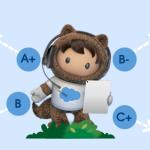Table of Contents
How does a business define digital marketing?
The top five benefits of digital marketing
Challenges in digital marketing
Digital Marketing strategies – what should you keep in mind?
How do you plan a digital marketing strategy for your business?
Successful digital marketing campaigns to inspire you
What is the role of a digital marketing manager?
Digital marketing for business growth
Make digital marketing count with Salesforce
Not too long ago, our use of electronic gadgets was restricted to just a handful of devices.Today, our lives are practically governed by the internet, and more precisely, by internet-enabled gadgets. The rapid internet penetration and ease of availability of internet-enabled devices have made sure that human experience in the real world is largely governed by the virtual/digital world.
From educational purposes to finding jobs, consuming entertainment, shopping, and even socialising – we do it all online. No wonder then, a significant chunk of the developed world is ‘constantly online’. Even in India, individuals spend an average ofseven hours daily using the internet. This has also led to significant changes in how people interact with brands, paving the way for the rise of digital marketing.
But exactly what is digital marketing?
What is digital marketing?
The world is increasingly shifting its focus online. In order to stay relevant and grab the attention of their customers, businesses today need an online presence as much as a brick-and-mortar set up. Any marketing effort that is made to reach the online customers on any device of their choice is termed digital marketing.
Digital marketing or online marketing is the group of all marketing activities by businesses to connect with current and prospective customers using internet channels like websites, search engines, social media, emails, etc., on the devices preferred by the customer.
How does a business define digital marketing?
Digital marketing for businesses is engaging with present and potential customers and promoting the business online through various channels such as social media, websites, emails, search engines, and even text and multimedia messages.
Unlike traditional offline marketing activities, which can be limited in their scope, digital marketing offers ample room for strategic thinking, resource optimisation, , and tracking the performance of these activities to further boost marketing efforts.It also enables businesses to target focused groups of customers, instead of using traditional marketing methods based on carpet-bombing. This makes digital marketing more effort- and cost-effective. Let’s look at some of these benefits of digital marketing for businesses in detail.
The top five benefits of digital marketing
1. Wider reach
Today, an entrepreneur can create a website sitting in their store in Mumbai, run a targeted online campaign in Delhi and connect with audiences in New York using social media.Unlike traditional marketing, digital marketing provides the scope to reach a much larger audience efficiently and effectively in any part of the world, levelling the playing field between established global corporations and smaller companies.
2. Hyperlocal penetration
While an online presence will result in broader reach, AI and ML-based marketing tools also allow you to reach your local audience more granularly. In other words, these allow you to connect with potential customers with high purchase intent, right in your area of business. This targeted marketing helps build a good base of potential customers without expensive offline marketing activities such as putting up billboards, distributing flyers, etc.
3. Easier personalisation and targeting
Not all of your customers are at the same stage of the buyer journey. But ffline content materials are crafted with a one-size-fits-all approach as it is meant to enable visibility from as large an audience as possible. Even though you might deploy significant resources, time and effort for the creation and execution process, these campaigns are more like a shot in the dark. With digital marketing, you can quickly create multiple advertorials customised for and targeted at different customer segments, that too at a fraction of the cost. An example would be a pop-up reminder for a person with items left in their website shopping cart, to encourage them to make the purchase.
4. Better customer connection
Customers today are not just looking to buy your product or service, they are looking to create lifetime value by associating with your brand.And businesses today have increased opportunities to directly connect with their customers over email, chat, or social media. This, along with the data-gathering tools available at their disposal, helps businesses paint a relatively detailed picture of their customers and understand their unique preferences, behaviours and purchasing patterns. This allows the brands to understand their customers at a deeper level and share information, solutions, or content that are personalised and more relevant.
5. Higher conversions
Like all marketing activities, timing is everything, and digital marketing offers simple ways to get timing right. Potential customers are more likely to engage with your brand when they are shown the right content at the right time. With enhanced personalisation, relevant messaging, and better reach, your efforts will yield a greater percentage of conversions. Plus, digital marketing helps you identify quality leads that are more likely to purchase your products. Better leads mean more conversions.
Given that digital marketing is more effective in helping businesses reach their desired audience, convert more leads, enable highly personalised content, and generate better ROI, it can be called the present and future of marketing.
Types of digital marketing
Digital marketing comprises a series of activities performed in succession to maximise reach, increase sales, and optimise marketing ROI. A comprehensive approach that combines two or more digital marketing platforms will likely produce the best results. Let’s look at the different types of digital marketing that businesses can leverage to boost their bottom line. These are: 
1. Search Engine Optimisation (SEO)
Search Engines are the gateway to the internet for internet surfers and search engines such as Google or Bing are the gatekeepers to information on the internet. Search engine optimisation (SEO) is the practice of adjusting your business’ online presence such that it ranks higher on relevant searches and, therefore, funnels a significant chunk of the online traffic towards the business. High-quality content with the right keywords is fundamental to ranking better in search results. Adding alt text for images, and descriptive text for videos and audio content also make it easier for the search engine to understand the nature of your content.
2. Content Marketing
Content marketing is a broad term which involves the creation, curation, and management of content – that includes video, text, audio and photos – and promoting it to the right target audience. It is a means of creating a resource centre for your customers, for you to be viewed as a specialist and establish your thought leadership. Creating engaging content and establishing yourself as a thought leader in your field will help grow your audience and deepen their trust in your brand.
3. Social Media Marketing
This type of digital marketing utilises different social media platforms to achieve marketing goals. Being present on popular social media platforms is step one. Step two is crafting the right content for that platform in order to drive engagement, ultimately leading to more conversions. The content can include posts on Facebook, photos and videos on Instagram, and insightful tweets on Twitter.Engaging social media influences for influencer marketing also is a very popular social media marketing activity.
4. Pay Per Click (PPC)
These are ads that businesses pay for, but only when they are clicked on. It’s a short-term strategy that pushes the organisation up in the search results, increasing online traffic. Running PPC ads for popular keywords is more expensive than lower competition keywords. But benefits can be seen from even minimal investment, as you’re still only paying for clicks that bring people to your online business.
5. Affiliate Marketing
Affiliate marketing involves a third-party entity (the affiliate) that markets your products and services and earns a commission on the sales it generates. The affiliate can be ‘unattached’ – having no connection with the product or service but generally running PPC campaigns to generate leads. Or the affiliate could be ‘related’, wherein they are in the same space as your business. And finally, the affiliate can be ‘involved’ in the sense that they’ve tried and trusted your product.
6. Native Advertising
Native advertising is the promotion of your product or service on a platform such that it fits within the look and feel of that specific platform. While banner ads tend to stick out and disrupt the natural feel of the web page, native ads blend in with the platform, either as top search results on Google, in-feed on social platforms, or in the sidebar. The native advertising market will be worth overUSD 400 billion by 2025, making it one of the most prolific modes of marketing.
7. Mobile Marketing
 Any form of marketing that uses mobile devices, such as smartphones and tablets, is referred to as mobile marketing. To deliver timely and relevant adverts, mobile marketing typically uses mobile device characteristics like push notifications and location awareness. Aimed at the consumer on-the-go, it’s crucial that the information or message relayed is personalised, location- and time-sensitive. This type of marketing is a cost-effective way to constantly engage with customers andgenerate more qualitative leads.
Any form of marketing that uses mobile devices, such as smartphones and tablets, is referred to as mobile marketing. To deliver timely and relevant adverts, mobile marketing typically uses mobile device characteristics like push notifications and location awareness. Aimed at the consumer on-the-go, it’s crucial that the information or message relayed is personalised, location- and time-sensitive. This type of marketing is a cost-effective way to constantly engage with customers andgenerate more qualitative leads.
8. Email marketing
Email marketing continues to be a popular marketing tool with impressive ROI. With emails, you can segment and communicate directly with your audience so that they get relevant information – whether it’s special discounts, surveys, or new launches. It also acts as the perfect mode of communication before, during, and after purchases, keeping the interaction between you and your customer going.
Want to create engaging, catchy emails? Here’s how you can create powerful email templates for your brand
9. Online PR
This is a means of improving your brand’s online presence with the help of other strategies such as affiliate marketing, SEO, social media, etc. It is a broad term that shares the same objective as traditional, offline PR – generating publicity for your brand. This can be achieved with creating viral content, engaging with followers on social media platforms, providing thought leadership, and influencing media owners.
10. Inbound Marketing
Inbound marketing is a strategy that encourages potential customers to take the first step towards you. It involves creating engaging content to establish brand awareness, showcase your subject matter expertise, and solve issues that your potential customers may face — all in a seamless, non-disruptive way. This is where it differs from traditional outbound marketing; companies place themselves between the customer and the experience, in the hope that the customers will make the purchase.
11. Sponsored Content
Sponsored content is a type of paid advertising where content in different formats (blogs, infographics, social media posts, podcasts, webinars, events, videos, etc) is produced and distributed on different platforms. They are usually published with the ‘sponsored content’ tag, as native advertisements, but differ in their focus – which is shaped around delivering value, as opposed to selling the product or service.
Clearly, digital marketing offers multiple avenues to promote and grow your business. However, the effectiveness of these strategies, and how you use them, also depend on how well you overcome the challenges that follow. Although most brands want to use digital marketing to achieve the same goals, the difficulties they face can vary. One brand may struggle to generate enough social media traffic for their website, while another may not be able to calculate the return on investment for their most successful channel. Businesses need tofully comprehend the obstacles in their digital marketing efforts and then apply the right mix of strategies to reach their desired goals.
Challenges in digital marketing
The Covid-19 pandemic shuttered several brick-and-mortar businesses around the world, while playing a major role in expediting their shift to the online space. Marketing teams were compelled to turn to digital means, which meant dealing with a relatively steep learning curve. As more companies shift to digital marketing methods, consumers are inundated with competing ads, making it more difficult for brands to hold on to the customer’s attention.
Therefore, a primary challenge is to make your brand stand out in the crowd – by deploying marketing strategies that can effectively communicate your product’s USP to the target audience. Another hurdle is to create quality leads in a cost-effective manner. For this, you need to create a digital infrastructure that captures specific customer data while also offering value to your customers. Figuring out how to use complex digital tools is another barrier; this can be resolved through upskilling and training initiatives for marketers.
Since there are several platforms and formats available to a digital marketer, creating the right content in the right format and publishing it on the right platform at the right time is in itself a challenge. To overcome this, you need to be well-versed with the nuances of different types of marketing strategies and utilise these correctly for a successful marketing outcome.
Digital marketing strategies – what should you keep in mind?
What is a digital marketing strategy? Simply put, it is a plan that uses different platforms and content formats to achieve business goals. The purpose of digital marketing tactics is to raise brand awareness for your company, draw in new clients and increase sales. A strong strategy helps create an online presence for your brand using social media, sponsored search, organic search, websites and more. It considers your resources – personnel, time, and money – and understands the audience and their preferred channels. The idea is not to spread yourself thin on all channels but rather to have a strong presence on those platforms that a majority of your customers frequent.
Instead of creating content for all platforms at once, it’s best to focus your efforts on experimenting with content on specific channels that work well for you, monitoring your brand’s performance on these, and optimising your efforts on the platforms which give you best results.
For example, if you’re a recruitment/headhunting agency, you are better off advertising on a platform such as LinkedIn, which is a ‘professional’ social media site. As a luxury boutique, your business could look at platforms such as Instagram and Pinterest. For unique products, search engine marketing may be your go-to option. For everything else, Facebook and Google serve as all-purpose platforms.
How do you plan a digital marketing strategy for your business?

Step 1. Set your goals
First, understand why you want to get into digital marketing and what you intend to achieve from it for your business. It could be a broad goal, such as improving overall sales or ranking higher on search results. Or it might be something more specific, like promoting a new product or getting the word out about a particular event. Remember that your marketing goals should align with your overall business goals.
Step 2. Identify your target audience
Unlike traditional offline marketing, digital marketing platforms allow you to target specific audience segments. Therefore, the next stage is to develop buyer personas that are precise and go beyond typical demographic targeting. Buyer personas depict your ideal customers and can be developed by analysing and surveying your company’s target market. For example, an up-and-coming casual dining restaurant would like to target young college-goers, while a premium fine-dining place might focus more on older professionals.
Step 3. Decide the budget for each channel
Ideally, you would prefer to have t an online presence on all popular social media sites, own a website, conduct SEO research, have an up-to-date blog, and employ a team that can churn out creative content. But all of this is expensive, especially in the initial stages of the business. This is why once you’ve identified your channels and audience, plan a budget for your platforms. Focus on inbound marketing and organic reach, which are relatively inexpensive, and outsource the creative work if you don’t have the budget to hire a team.
Step 4. Combine paid and free strategies
For an effective digital marketing strategy for your business, a digital marketing campaign needs both paid and unpaid components. When in doubt, try both. As you discover which sponsored and free channels work best for your brand, refine your marketing mix.
For example, creating quality content that speaks to your target audience and performs well naturally is a great way to attract and engage customers. This type of organic content saves money, builds credibility and trust, and is a true indicator of your business’ growth. However, you can quicken results with the occasional paid advertising initiative that depends on targeting rather than SEO or social shareability.
Step 5. Content, content, content
Content is king. Know your audience and craft content (blogs, posts, articles, videos, newsletters, etc.) that informs, engages, and consequently converts. Even if you do not advertise your content, it will always be there for your organic audience and reinforce the trustworthiness and credibility of your brand.
Step 6. Mobile optimisation
More people consume content on their phones than on their desktops. Optimise the content on your digital assets for the mobile, on-the-go user. Ensure your photos, videos, infographics, and texts, are easily accessible on the phone. A standalone app will work wonders if your products or services require constant interaction with the customer.
Step 7. Keyword optimisation
Search engines need to know what your business is all about, to connect you with the people looking for you. How do search engines know what it is you’re selling? Keywords. Use keywords that are indicative of your business in your content. Research high-performing keywords and their variations and insert them into your content to be found more easily. For social media channels, hashtags are the equivalent of keywords. Look up trending topics and hashtags and craft your content around them to stay current and relevant.
Step 8. Analyse and optimise
Analytics give you key insights into your asset performance. Using information such as website visits, ad clicks, conversions, and more lets you understand which platform is working for your business and the kind of content that gets the most traction. Every activity should have a defined KPI that serves as your yardstick for success. Set benchmarks after that; this is the goal you want to achieve. For example, in an email marketing campaign, the KPI can be the email open rate, and the benchmark might be 25 per cent or above.
Looking back at some of the best digital marketing campaigns from the past is one of the best methods to get ideas for your marketing activities. Observing what other firms have accomplished might inspire your imagination and help you come up with unique ideas for your own initiatives. Here are a few examples to help you get started.
Successful digital marketing campaigns to inspire you
1. #ShotoniPhone
This was Apple’s organic campaign to promote the camera quality of the iPhone 6. Users were asked to share their best shot with the hashtag ‘ShotoniPhone”. The viral campaign saw nearly 6.5 billion media impressions, and it continues to this day, with Apple selecting the best shots from across demographics for its billboards around the world. What was the impact on sales? The campaign was responsible for an additional sale of 62 million iPhone units compared to the previous campaign.
2. Monster India SEO
Monster, the job search portal, began inserting structured data into its India web pages to improve the quality of its resume and applicant database. After seeing initial success in Jobs on Google Search, the group announced JobPosting structured data with a pilot that was eventually scaled. Jobs on Google Search generated far more traffic, detail views, and applications than Monster.com was able to get with its earlier SEO and paid advertising efforts. It saw a 94% increase in organic traffic and a 10% increase in applications. This model was later replicated by Monster in the rest of Southeast Asia.
3. Red Bull Stratos
Considered by some as one of the most ingenious marketing campaigns ever, the record-breaking 38.6 km space jump integrated well with the slogan ‘Red Bull gives you wings.’ Austrian skydiver Felix Baumgartner broke quite a few records, jumping from the edge of space with the fastest freefall, breaking the sound barrier without the use of external power, the longest freefall without a drogue chute, and a YouTube Livestream with the most concurrent views (8 million).
4. Slack
Slack, the digital headquarters of your workspace, achieved immense success by providing excellent customer support. It continues to respond to over 8,000 tickets every month while replying to more than 10,000 tweets. They provide Slack tips on Twitter to help ease their users’ pain points. It is a prime example of what a stellar customer support experience can do, even if the product and its solutions are entirely online.
Viral digital marketing campaigns are the holy grail for any brand. So how can you create one of your own? The first step is to bring in the required expertise in the form of a digital marketing manager.
What is the role of a digital marketing manager?
A digital marketing manager is responsible for creating an effective digital marketing strategy. The digital marketing manager chooses which marketing channels to use and also allocates the budget according to the business goals The digital marketing manager is also responsible for allocation of human resources with desired skill sets to achieve the set goals.
A digital marketing manager should, therefore, be well-versed with SEO, social media channels, content marketing, and PPC advertising methods, to name a few. For larger organisations with bigger marketing budgets, individual heads for each of these digital marketing functions are hired, all under the aegis of a digital marketing manager.
Digital marketing for business growth
Never before have organisations been so close to their customers, with the potential to communicate with them consistently and easily. The explosion of digital marketing has coincided with the evolution of computing power — businesses can harness AI-driven analytics tools and advanced CRM software such as Salesforce to develop key strategic decisions based on reliable data.
Data is the bedrock of an effective marketing strategy. Collecting quality customer data improves marketing intelligence. This enables insightful analysis, helps refine future marketing efforts, improve customer service, and foster innovation. However, connecting personal and behavioural data points — such as preferences and transaction history — of millions of customers is not easy. To be able to do so, you need to use a single CRM platform that can integrate data from different functions in your organisation to act as a single source of truth. A sophisticated CRM solution such as Salesforce can capture relevant and crucial data and provide a 360-degree view of your customers. Knowing your customers and having the tools to talk to them effectively will yield positive returns and help you distinguish yourself even in a crowded marketplace.
Digital marketing FAQs
1. Inbound marketing and digital marketing – what is the difference?
Inbound marketing is a digital marketing strategy that focuses on getting customers to make the first move. Instead of intrusive ads that the customer isn’t ready for, inbound marketing involves subtlety and consistency in ad placement to provide more value to the customer in their chosen online space. For example, a blog about skincare routines would provide the reader value in terms of the information offered, while the skincare products the business sells can be hyperlinked within the content.
While inbound marketing is a form of digital marketing, the latter is simply an umbrella term that includes inbound marketing as a strategy.
2. Does digital marketing work for all businesses?
Digital marketing has the potential to work for all businesses, irrespective of their size, location, and target audience. There are several ways in which digital marketing could play a crucial role.
- With more and more consumers spending their time online, digital marketing is one of the cheapest and easiest ways to approach them.
- Digital marketing is SMART marketing- Scalable, Measureable, Achievable,Relevant and Timebound. With digital marketing, it is possible to understand and communicate with your audience in a more meaningful manner.
- Digital marketing helps create relevancy. Even when there is no buzz around your product or service, your brand could still engage with your audiences and build lasting relationships.
- Even if your business largely operates offline, digital marketing helps bring customers closer to you. For example, using Google Maps, your store could be highlighted to a prospective customer in the area even when they are not really looking for you.
- If you really want to keep up with your competition, you have to develop an online presence, and digital marketing is a cost-effective way to achieve a unique digital footprint.
3. What types of digital content should I create?
Depending on your target audience, budget, and messaging requirement, there are several types of digital content you could focus on. The most popular ones are:
- Blogs: informative articles, how-to guides, listicles, value proposition content
- Infographics: graphical content that conveys core messaging in a creative, interactive, and visual manner
- Video Content: Engaging video content that helps build a loyal viewership and brand affiliation
- Social media content: Engaging, D2C content to interact, inform, and educate customers to influence their buying decisions.
The first place to start for any business would be to establish an online presence on popular social media platforms and create informative articles, detailed infographics, and engaging video content, supported with SEO tactics.
4. What is the difference between B2B and B2C digital marketing?
Digital marketing works differently for B2B (Business to Business) and B2C (Business to Consumer) companies.
- B2B sales generally have a longer funnel, involving multiple stakeholders; while B2C marketing has shorter conversion periods with the end user being very close to the marketing message and product.
- The messaging for B2B sales is more formal and business focused with factual evidence, case studies, and logic making as the core of digital marketing campaigns. Whereas in B2C marketing, the focus is more on the emotional and psychological cues of the target audience, with customers responding to content that resonates with their beliefs and thoughts.
- B2B marketing may lead to sales or may be just undertaken for building networks and relationships. Whereas B2C marketing often involves direct messaging to influence end-user/ buyer decisions.
5. What Is Internet Marketing?
Any kind of marketing, promotions, and sales activity conducted over the internet is called internet marketing. Internet marketing provides global reach in a cost-effective manner to enhance customer experience.There are various tactics of internet marketing, including websites, social media, email, and search engine marketing. Internet marketing is a subset of digital marketing as the latter includes all kinds of digital promotions such as the phone, various types of ads, WhatsApp marketing, SMS marketing etc.
6. What are some common problems that digital marketing can solve?
Some of the common business problems that digital marketing can effectively resolve are:
- Improving your reach
- Increasing lead generation
- Targeting most likely-to-be converted customers
- Enhancing communication with your target audience
- Making data-backed decisions
- Increasing your return on marketing investments
7. What’s the future of digital marketing?
The future of digital marketing is indeed very exciting and promising for all aspects of businesses.With the growing usage of internet and Internet of Things (IoT), digital marketing has already made huge strides in popularity and applications.There are several brands today who give preference to digital marketing over traditional marketing methods due to its effectiveness and resource efficiency. Digital marketing will soon be everywhere as more things turn digital or smart. Billboards are now becoming electronic, with moving images and videos. Home appliances are coming with screens, connected to the internet, presenting opportunities to market your products and services.
8. What channels make up digital marketing?
Anything and everything that runs on the internet has the potential to be a digital marketing channel. Primarily, these are the channels that make up digital marketing platforms
- Websites
- Blogs and V-logs
- Social Media
- Search Engines
- Affiliate Marketing
- Mobile Apps
9. How much will digital marketing cost my business?
Digital marketing could cost your business very little if you have the basic knowledge and understanding of what you want to do. However, depending on your business requirement, budget, and goals, the cost of a digital marketing campaign could range from a few thousand rupees a month for small organisations to several lakhs of rupees for larger organisations.
If you want to start small, you can use websites, blogs, and social media and focus on generating organic traffic. Medium to large corporations however, go for SEO, PPC, email marketing, and other options to generate paid traffic apart from the usual organic growth in audience.
10. Digital marketing vs social media marketing
Digital marketing is an umbrella term for all activities related to the marketing and promotion of products and services via the internet.. Social media marketing (SMM) is one component of digital marketing where marketers use popular social media platforms to find their target audience, influence their buying decisions, build brand awareness, and gather followers.
Digital marketing has broad goals like boosting a brand’s presence and increasing sales and so it comprises of several interrelated or standalone activities leading to achieving the set goals.However, Social Media Marketing is often done with the specific goal of targeting the right audience on their preferred medium – for example a pre-launch social media campaign for a product could just be to create awareness and increase popularity, which may or may not improve sales.
Make digital marketing count with Salesforce
Digital marketing aims to engage customers intelligently, for which marketers usually juggle different campaigns, tools and techniques on several platforms at the same time.
Salesforce Marketing Cloud is a marketing platform with the ability to support a wide range of marketing activities. These include executing multi-channel campaigns, creating dynamic customer journeys, analysing pre- and post-campaign analytics, audience building and segmentation, social media engagement and advertising, and data management. With the help of Marketing Cloud, you can leverage relevant, granular customer data to gain an in-depth understanding of your customer and engage them in new ways with relevant messaging.
Want to maximise the impact of your digital marketing initiatives?




























